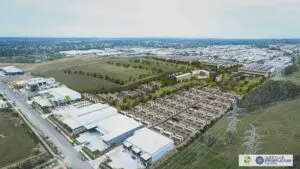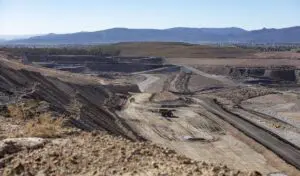Despite the new Queensland LNP government’s about-face on renewable energy, developer Cubico is doubling down on the state with the announcement of another major wind and battery project.
another 792 megawatt (MW) wind farm proposal.
It has unveiled plans for the Marmadua energy park, would erect up to 110 turbines for wind farm of 792 MW capacity, along with a 200MWh battery energy storage system (BESS), on farmland tucked in between three state forests.
Marmadua is a rural area on the Western Downs, 225km west of Brisbane, which is dotted with coal seam gas wells both inside and outside the nearby forests, and is already host to a number of major solar, battery and wind projects.

Proposed turbine sites for Marmadua wind farm.
Queensland’s new Liberal government is doing its best to reverse years of growth for the renewable energy sector, and has promised to scrap the state’s renewable energy targets, which aim to reach 50 per cent renewables by 2030 and 80 per cent by 2030.
The state is the most coal dependent in Australia, with an average share of 65 per cent over the last 12 months, and it is now focusing on keeping decrepit coal power plants open and building more gas generators.
But UK-headquartered Cubico Sustainable Investments Australia is pressing ahead with projects in the state, adding Marmadua to its proposed 1.45 GW Middle Creek Energy Hub that will also feature a 200 megawatt hour (MWh) battery.
Both projects are now undergoing federal scrutiny under the EPBC process.
Cubico is no stranger to Queensland. It is a 50 per cent shareholder along with Queensland government-owned Stanwell in the 506MW Wambo wind farm located to the north of Marmadua.
It also invested in the Delburn wind farm in Gippsland, Victoria, in 2021. That project was notoriously difficult to push through both planning processes and the legal system as it lay over multiple council areas and drew significant local opposition.
Shifting political landscape
The Maramadua project has an estimated operational start date of early 2027, according to documents lodged with the EPBC.
It’s also being assessed by public environment report rather than the more common environmental impact statement route or state-parallel bilateral approvals process, given the impact of Queensland’s radical change in political attitude to renewables.
In its original EPBC referral for Marmadua, Cubico noted that its project fit into the Queensland Energy and Jobs Plan from 2022. This plan set a renewable energy target of 50 per cent by 2030 and 80 per cent by 2035.
The 2030 target is viewed as still possible under the new government thanks to already-approved projects underway, but the 2035 target is now in doubt.
That plan also called for at least 25 GW of new and existing renewable energy, switch all publicly-owned coal-fired power stations to clean energy hubs by 2035, and build some 1,500 km of new high voltage backbone transmission lines.
Adding wind to grazing, coal seam gas
Marmadua proposes to connect to the national grid via the existing Powerlink Braemar to Bulli Creek 330 kV transmission line which traverses the site.
The project area was historically used for grazing, horticulture and later coal seam gas operations.
The remaining vegetation is along water features and includes threatened ecological communities of brigalow, weeping Myall woodlands, and poplar box grassy woodland.
Cubico said in the original EPBC referral that it’s designed the wind farm to avoid all but one of these patches.
In terms of fauna, surveys show five species listed with the EPBC are known to occur in the area, the diamond firetail, southern whiteface, white-throated needletail, short-beaked echidna, and golden-tailed gecko.
And those surveys suspect, but didn’t find, another five species might be in the area given the vegetation. These are the fork-tailed swift, painted honeyeater, south-eastern glossy black-cockatoo, koala, and yellow-bellied glider.








